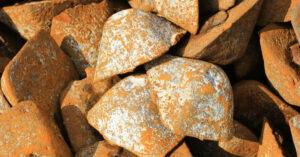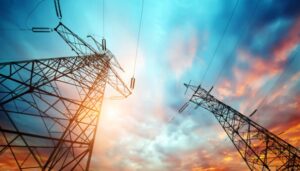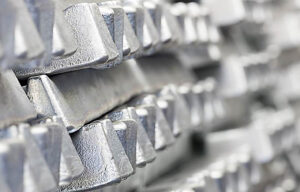
Ukrainian farmers reduced sugar beet acreage in 2025 by 15.4% compared to last year, to 220,000 hectares, according to First Deputy Minister of Agrarian Policy and Food Taras Vysotsky.
“The Ministry of Agrarian Policy’s estimate (of sugar beet acreage – IF-U) stands at 220,000 hectares, compared to 259,000 hectares last year. We have a guaranteed 15% decline,” he said at a meeting of the Trend&Hedge Club.
When asked whether the European Union’s trade policy had influenced this situation, Vysotsky noted that this was definitely the reason for the decline in production of this crop.
He stressed that Ukrainian processors were very disappointed with the sugar supply volumes to the EU announced in spring 2025, which amounted to 67,000 tons for 2025. Currently, this supply threshold has been raised to 107,000 tons. However, at its peak, supplies to the EU reached 473,000 tons, so when comparing the allocated quota with the peak supply volume, the difference is obvious.
“In fact, the renaissance of the sugar industry in Ukraine was due to duty-free trade with the EU. Then, thanks to the scale and turnover, our producers began to enter other export markets, but the starting point was access to the European market, which has the highest margins. There are no alternatives in terms of margins,” the deputy minister said.
Vysotsky did not rule out that the area under sugar beet cultivation would continue to decline in the coming years. At the same time, he noted that all decisions on this matter would be made by producers taking into account export prospects, particularly to the EU.

The US continues to occupy a leading position among buyers of Ukrainian recycled pig iron: in the first half of 2025, the US market accounted for more than 77% of foreign exchange earnings from exports of this product.
According to data from the State Customs Service, Ukraine increased its pig iron exports by 47.5% in volume terms in January–June, to 883,200 tons, compared with 598,900 tons in the same period of 2024. In monetary terms, exports grew by 54.6% to $349.4 million.
The main destinations for exports in the first half of the year were:
The US — 77.36% of export revenue;
Italy — 11.96%;
Turkey — 4.91%.
Earlier, on March 12, 2025, the administration of US President Donald Trump imposed 25% tariffs on Ukrainian metal products, with the exception of cast iron. This allowed Ukrainian exporters to maintain their competitive position in the US market and, as statistics show, increase supplies.
At the end of 2024, Ukraine exported 1.29 million tons of processed cast iron worth $500.3 million, of which 72.6% went to the US. Thus, in 2025, the US not only retained its status as a key trading partner in this segment, but also strengthened its importance for the Ukrainian metallurgical sector.

In June 2025, Ukraine exported 14.5% more electricity than it imported, which happened for the first time since October 2023, according to the Ukrainian energy and climate think tank DiXi Group, citing Energy Map.
“In June, electricity exports exceeded imports by 14.5%. This happened for the first time since 2023: the last time sales exceeded purchases was in October of the year before last,” DiXi Group said in a Facebook post.
A total of 233.4 thousand MWh were exported in June, which is 2.6 times higher than in May.
More than half of exports went to Hungary – 52.4% or 122.3 thousand MWh.
Another 16.6% (38.7 thousand MWh) went to Romania, 15.9% (37.2 thousand MWh) to Slovakia, 14.7% (34.2 thousand MWh) to Moldova, and 0.4% (0.9 thousand MWh) to Poland.
Exports were carried out daily, gradually reaching a peak on June 27 – 15.8 thousand MWh per day.
DiXi Group experts note that it was on that day that supplies to Poland resumed after a break of more than three months.
Imports increased by 5% compared to May, reaching 203.9 thousand MWh, of which 43% (87.7 thousand MWh) came from Hungary, 24% (48.8 thousand MWh) came from Slovakia, 14.7% (30,000 MWh) from Poland, 12.4% (25,300 MWh) from Romania, and 5.9% (12,000 MWh) from Moldova.
“With imports compared to exports, everything was the opposite: from high figures, the largest of which, 13.7 thousand MWh, fell on June 9, they moved to lower ones. On June 16, the lowest amount was purchased, namely 1.5 thousand MWh. Supplies fell by 6-25% from all countries except Slovakia and Hungary, where they increased by 35% and 13%, respectively,” explains DiXi Group.
Analysts note that in June last year, a record 858.4 thousand MWh were imported, which is more than four times higher than the corresponding result for 2025.
As reported, in May 2025, Ukraine reduced electricity exports by 41% compared to April, to 89.1 thousand MWh, while increasing imports by 4%, to 194.1 thousand MWh.

In January-May 2025, Ukraine imported aluminum and aluminum products worth $206.628 million, up 20.2% compared to the same period in 2024. In May, imports of aluminum products amounted to $40.340 million.
Over the same period, aluminum exports increased by 31.9% to $57.761 million. In May, the company exported products worth $12.698 million.
In 2024, aluminum imports amounted to $446.006 million (+21.7% compared to 2023), and exports amounted to $124.408 million (+27.4%). In 2023, Ukraine imported aluminum products worth $366.463 million and exported $97.616 million.

In January-May this year, Ukraine reduced exports of semi-finished carbon steel products in physical terms by 34.1% year-on-year to 506,071 thousand tons.
According to statistics released by the State Customs Service (SCS) on Friday, exports of carbon steel semi-finished products fell by 34.7% to $248.953 million in monetary terms.
The main exports were mainly to Bulgaria (40.43% of supplies in monetary terms), Turkey (15.96%) and Poland (15.07%).
During the period, Ukraine imported 3,303 thousand tons of semi-finished products worth $2.687 million, mainly from the Czech Republic (72.47%), Italy (26.26%) and Romania (0.93%).
As reported, in 2024, Ukraine increased exports of carbon steel semi-finished products in physical terms by 56.7% compared to 2023 – up to 1 million 886.090 thousand tons, while revenue in monetary terms increased by 52.4% to $927.554 million. The main exports were made to Bulgaria (32.06% of supplies in monetary terms), Egypt (18.50%) and Turkey (11.14%).
In 2024, Ukraine imported 306 tons of semi-finished products worth $278 thousand from the Czech Republic (88.13%), Romania (7.19%), and Poland (2.88%), while in 2023 it imported 96 tons worth $172 thousand.